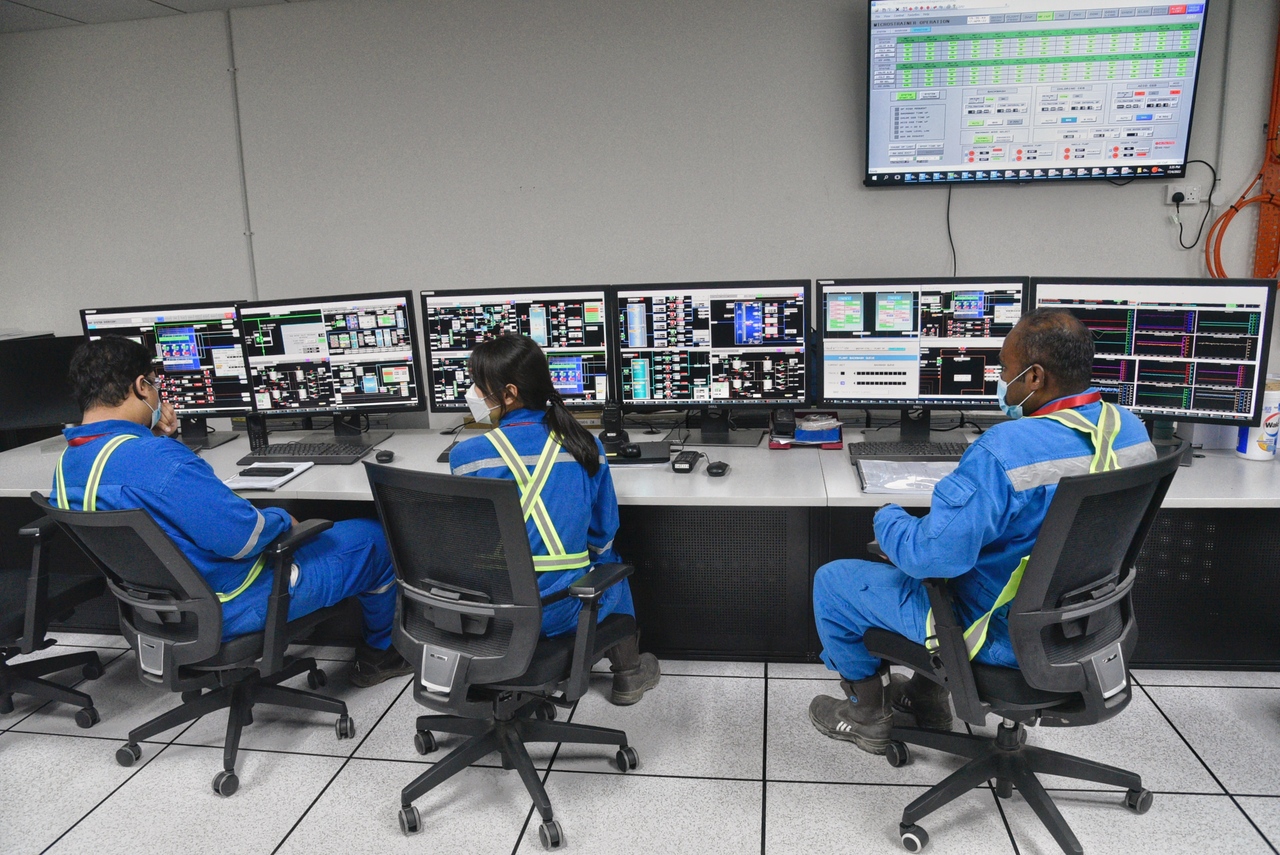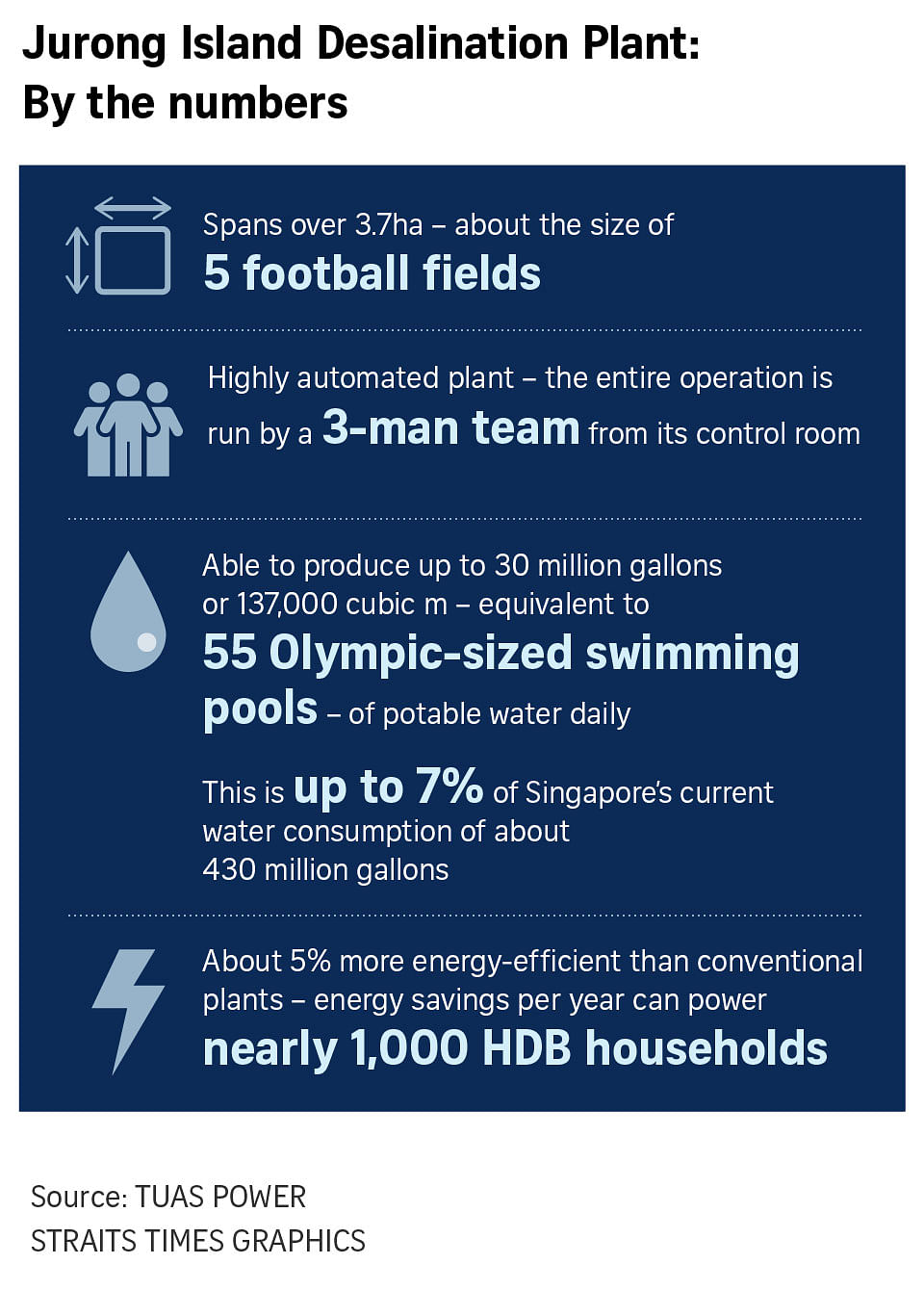How just 2 people can run plant that produces up to 30m gallons of water daily in Singapore
Sign up now: Get ST's newsletters delivered to your inbox

Staff at the central control room of the new Jurong Island Desalination Plant.
ST PHOTO: DESMOND WEE
Follow topic:
SINGAPORE - It takes a minimum of two people to run the nation's fifth desalination plant, which officially opened on Sunday (April 17) after a two-year delay due to Covid-19.
As it is located next to existing facilities in Tuas Power's Tembusu Multi-Utilities Complex, the Jurong Island Desalination Plant will be about 5 per cent more energy-efficient than conventional plants, said national water agency PUB.
Opened in 2013, the complex supplies electricity to the national grid as well as steam, industrial and demineralised water, and wastewater treatment services to customers on Jurong Island.
The highly automated desalination plant, which is jointly run by Tuas Power and ST Engineering, will be manned by a team of three people, making it the most manpower-efficient of the five desalination plants here.
The Straits Times looks at how the plant produces up to 30 million gallons, or roughly 55 Olympic-size pools, of water each day.
First, seawater 10m below sea level is drawn through two intake towers at Tembusu Multi-Utilities Complex. It is strategically located at the confluence of West Jurong channel and Tuas basin to ensure a good tidal flow of water.
About 22,000 cubic m of seawater can be pumped per hour.
Next, the seawater is pumped to cool the complex's power plant. Part of the seawater used in the power plant is then transferred to the desalination plant, said Tuas Power chief operating officer Michael Wong.
At the desalination plant, the seawater is passed through the dissolved air flotation system, which removes suspended matter such as oil and algae. Auto-strainers also filter out particles larger than 100 micrometres - the thickness of a sheet of paper.
The cleaned seawater is then pumped through an ultra-filtration system to remove microscopic organisms such as bacteria and viruses. Only water with dissolved salts can pass through the ultra-filtration membranes, which have a pore size of 0.02 micrometres.
At the "heart" of the plant is the seawater reverse osmosis system, where dissolved salts are finally removed from the ultra-filtered water. The system removes 99 per cent of dissolved salts and other particles by passing the water through semi-permeable membranes at high pressure, sufficient to shoot water about 600m high.
The cleaned water is then stored in a product water tank before it is piped to PUB's water supply network. Chemicals are added to meet drinking water standards and to remineralise the water.

Plant equipment such as filters and membranes are cleaned at the chemical dosing area.
Water used for backwashing of filters and membranes is held at the waste attenuation tank. Wastewater is treated in the neutralisation pit in the tank to ensure that the water can be safely discharged into open water.
The central control room is the "brain" that oversees the operations of the desalination plant. From the room, two to three people are able to keep track of the plant's operations through over 70 analysers, and make adjustments.


